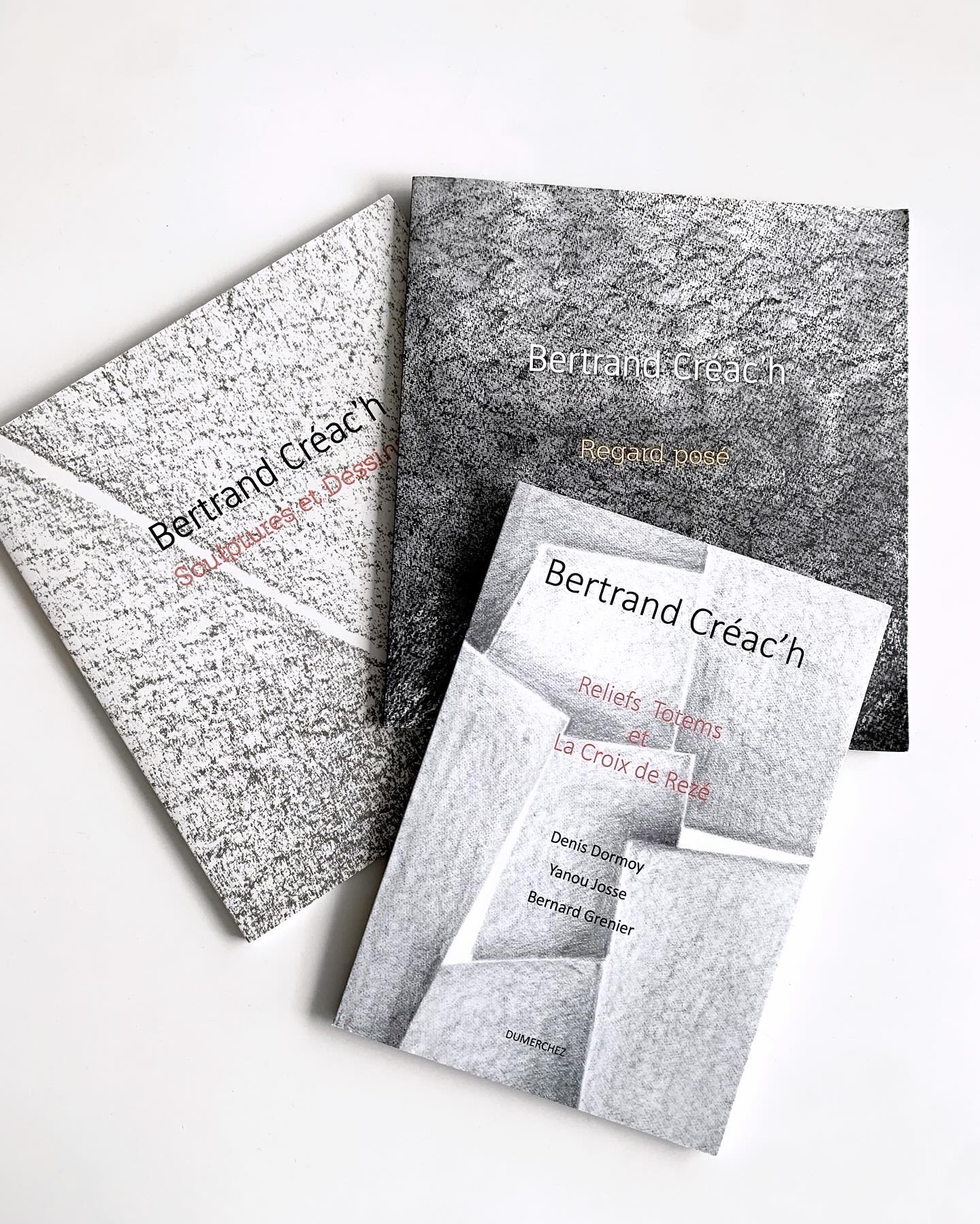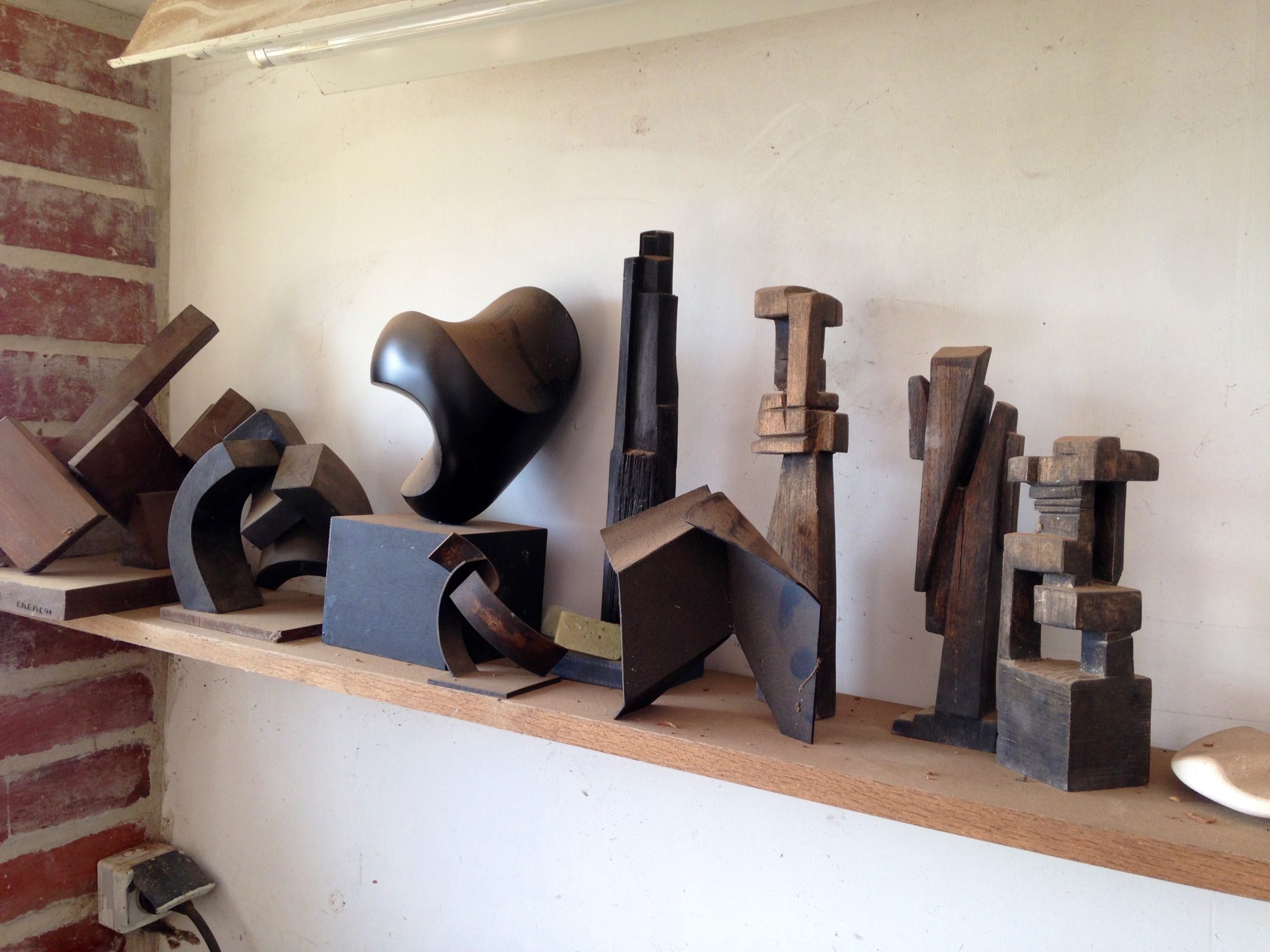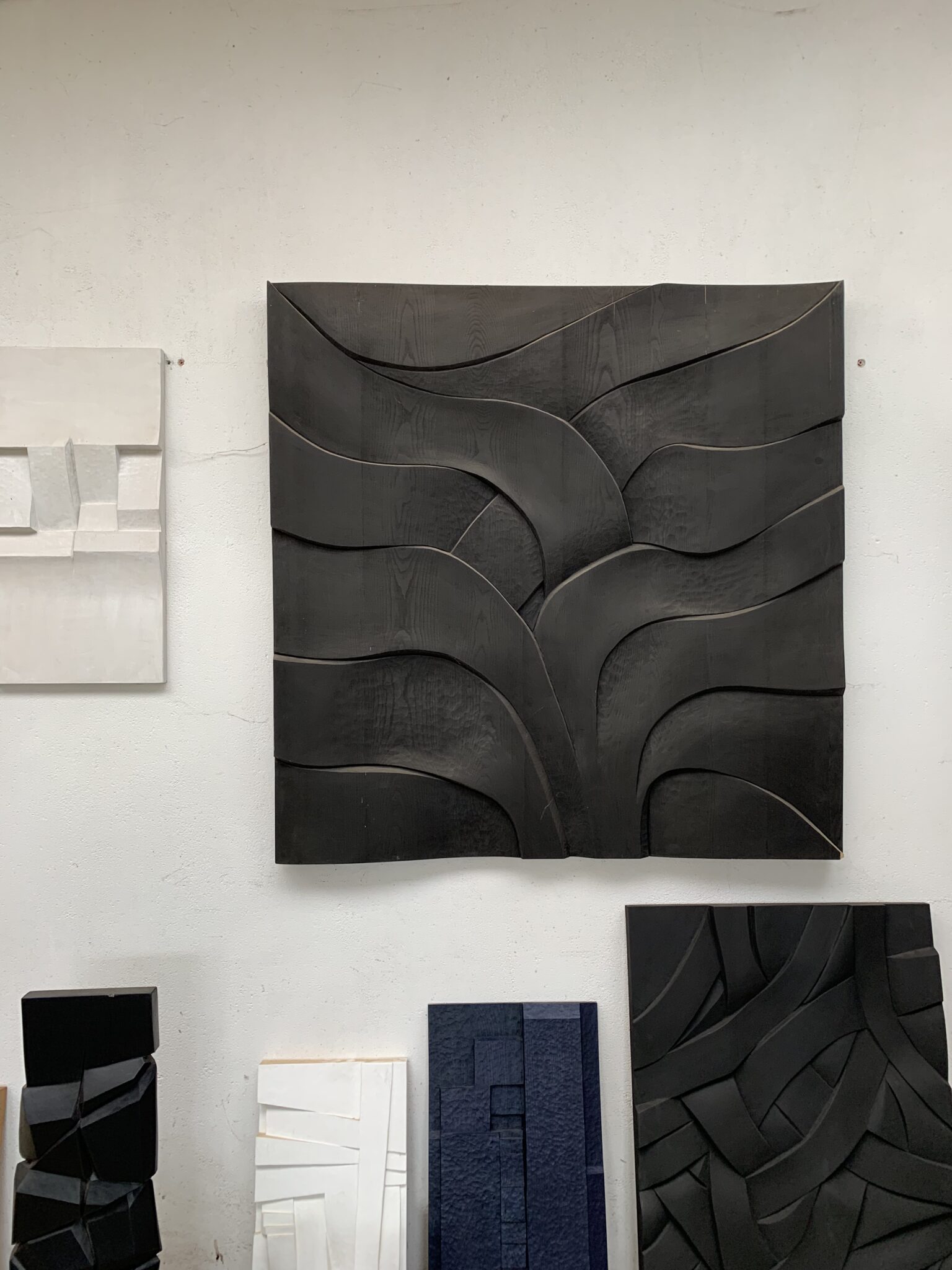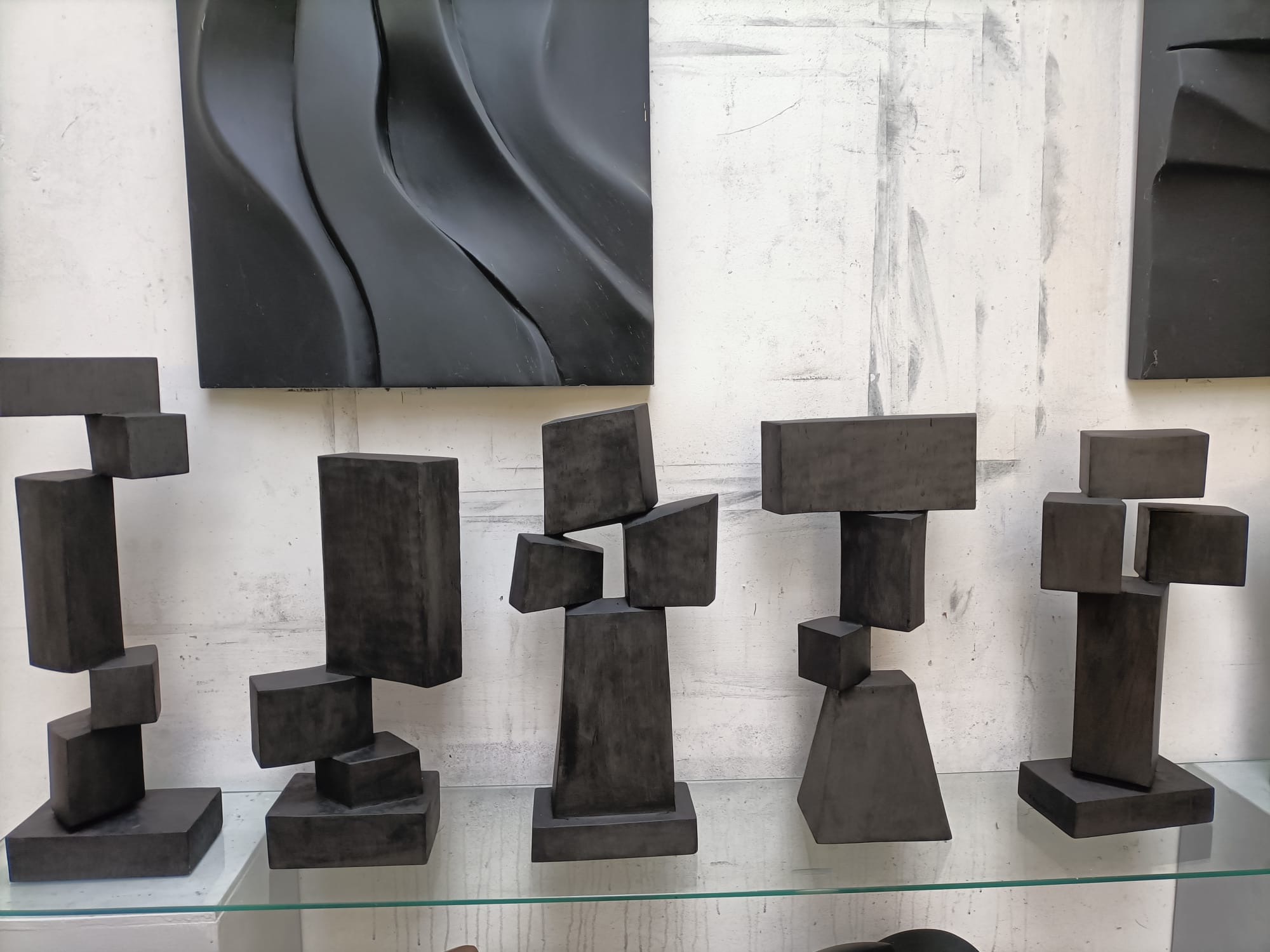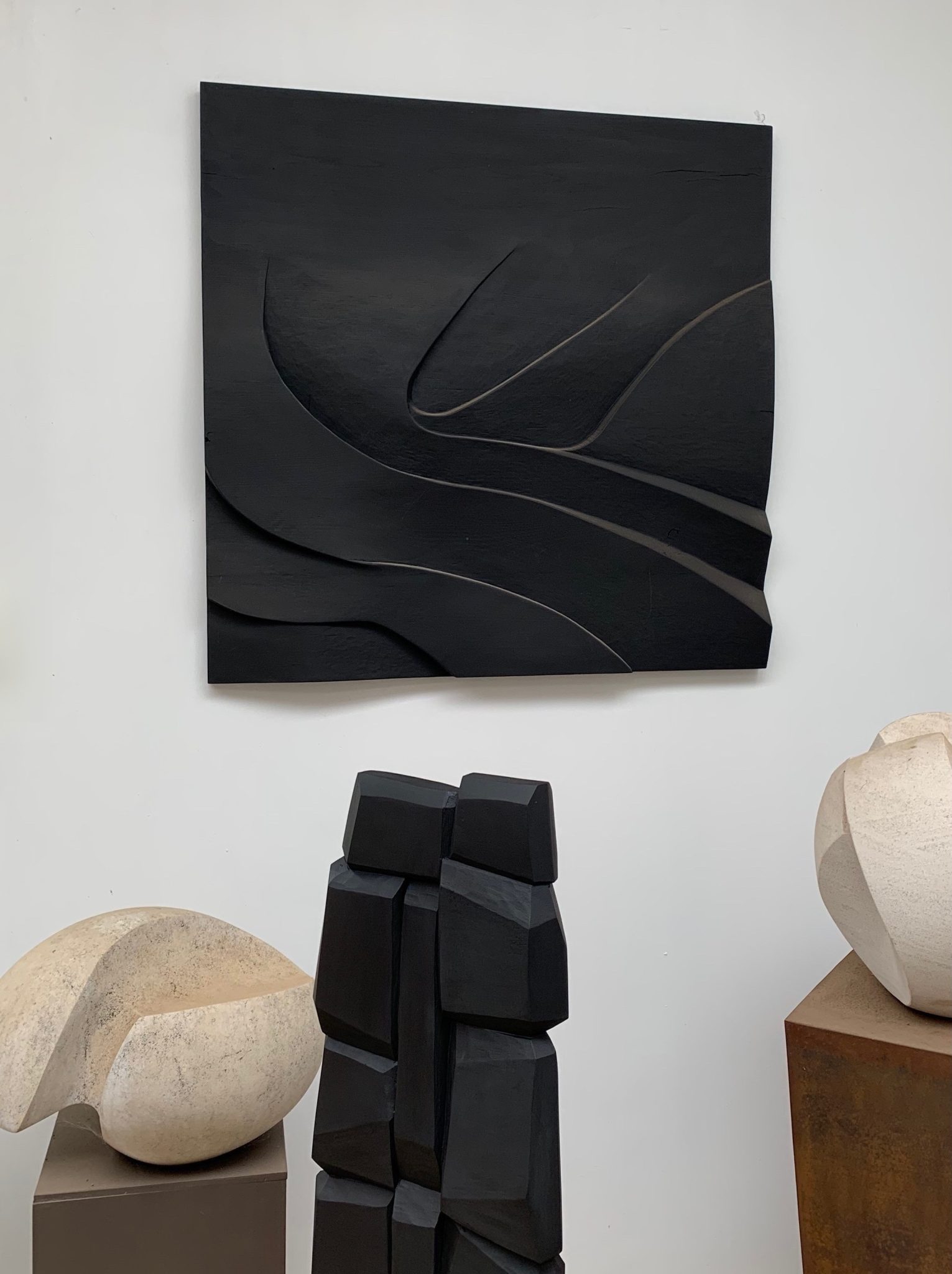'Passage', drawing on paper.
Emotion and enthusiasm characterize the work of Bertrand Créac’h, who, through sculpture, offers his interpretation of a dogma or an idea. Trained at the École Boulle, Bertrand Créac’h masters a refined visual language that he places in the service of a deeply felt art. At the heart of his concerns lies the representation of the sacred. The light that embraces his sculptures gives them both strength and movement, guiding the viewer’s gaze along a path the artist himself has envisioned.
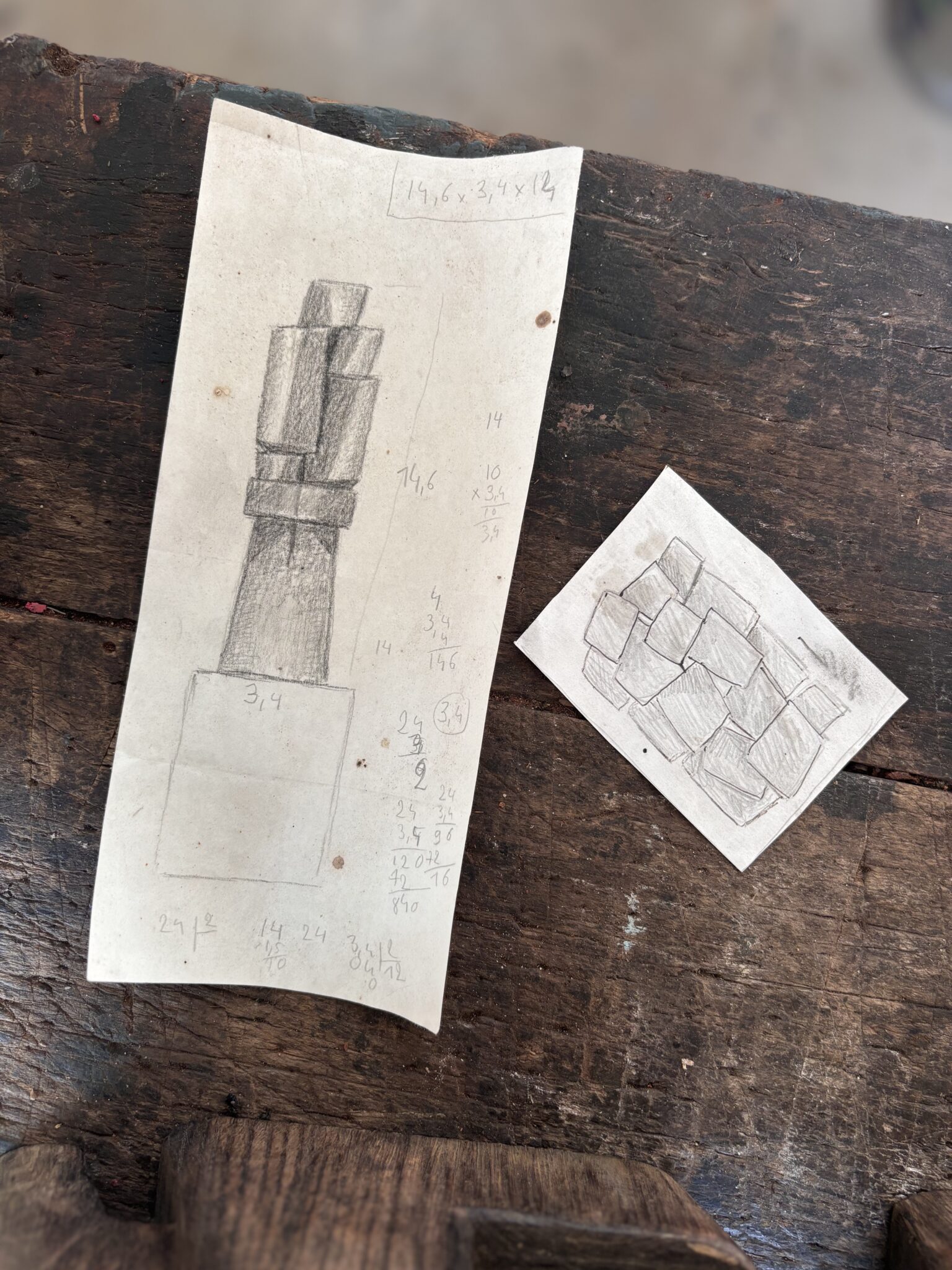
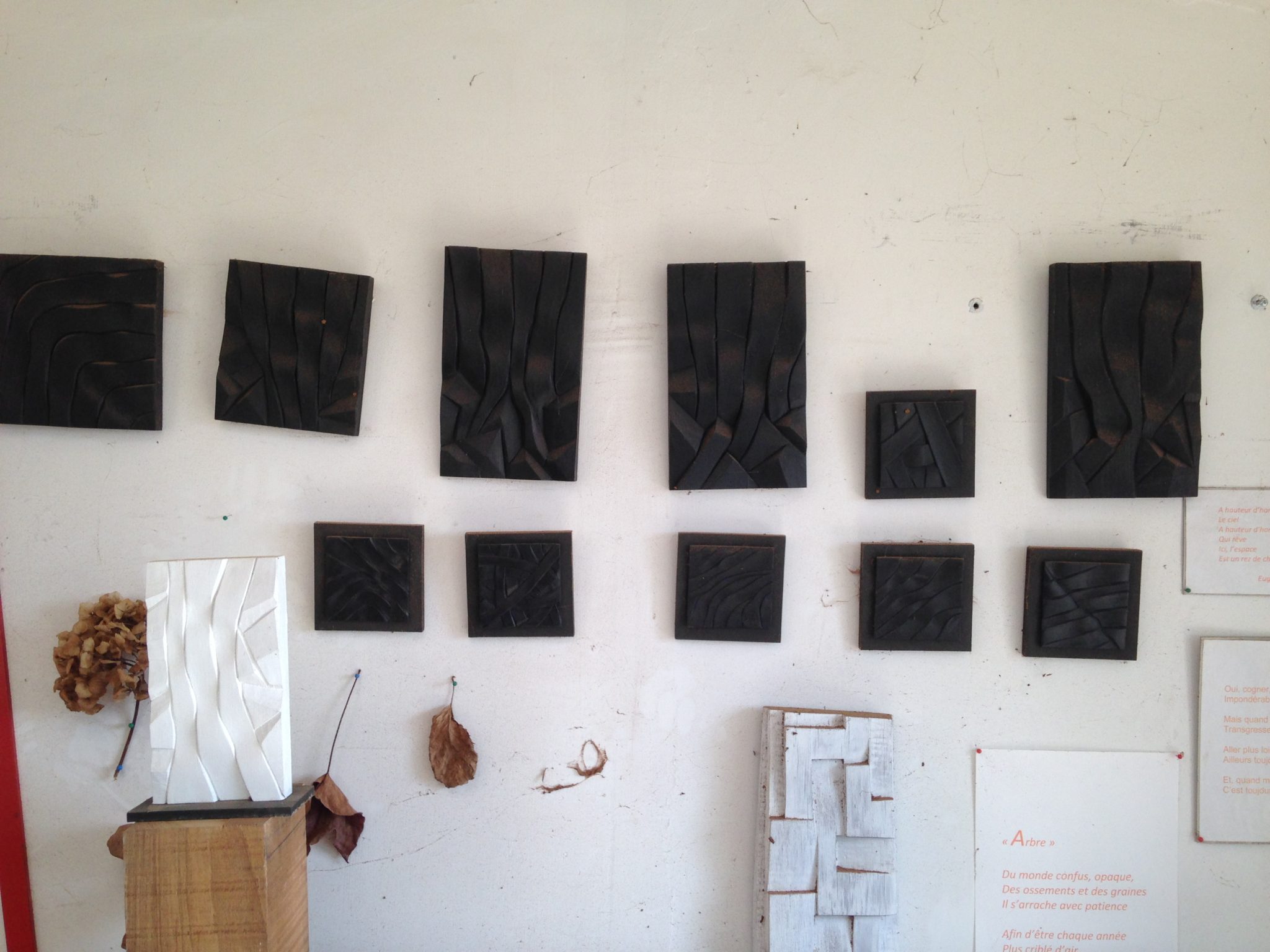
Bertrand Créac'h studio in Malassise, France.
Regardless of his technical approach, the texture of his volumes, or the specificity of his vision, as a born builder, he never strays from a soberly refined geometry, while maintaining an analog relationship with nature.
— Gérard Xuriguera, art critic.
Sculptor, draftsman, and colorist, Bertrand Créac’h composes a fantasized and almost obsessive Eden, becoming the wanderer, the interpreter, and the executor of a dazzling roadmap. Throughout his work, he strives to approach an extension of himself through a clear arrangement, allowing glimpses of still escapes to filter through—covered by the roar of the surf and the scent of the sea.
The first nostalgic revelations of a passionate wanderer, his watercolors drift away from waves and rocks to dissolve into backdrops of muted, humid, or floating tones. This dismantling of appearances reveals tempered, unadorned impulses—disarmingly elegant in their simplicity.
Whether in wood or bronze, his sculptures are sensitive and sensory refuges—gatherings of forms and false escapes, marked or flayed, ruptures and embraces carved into matter. He strips away aesthetics, loosens knots to tighten connections. Focus, asymmetries, balance—always with the summit in sight. Relentlessly, rising up vital forces.
Elsewhere, through solid and meticulous draftsmanship, the artist stirs shores fringed with foam—white and magnificent.
His drawings evoke torn, stylized rocks—graphic abbreviations poetically rendered within precision. In stark contrast to this rocky embroidery, a path emerges—superbly smooth. A dark and shadowy melody, it seems to suppress traces of a strange enchantment, as if hoping to hold on to what endlessly fades away.
— Text by Hélène Poisot, exhibition curator (2021).
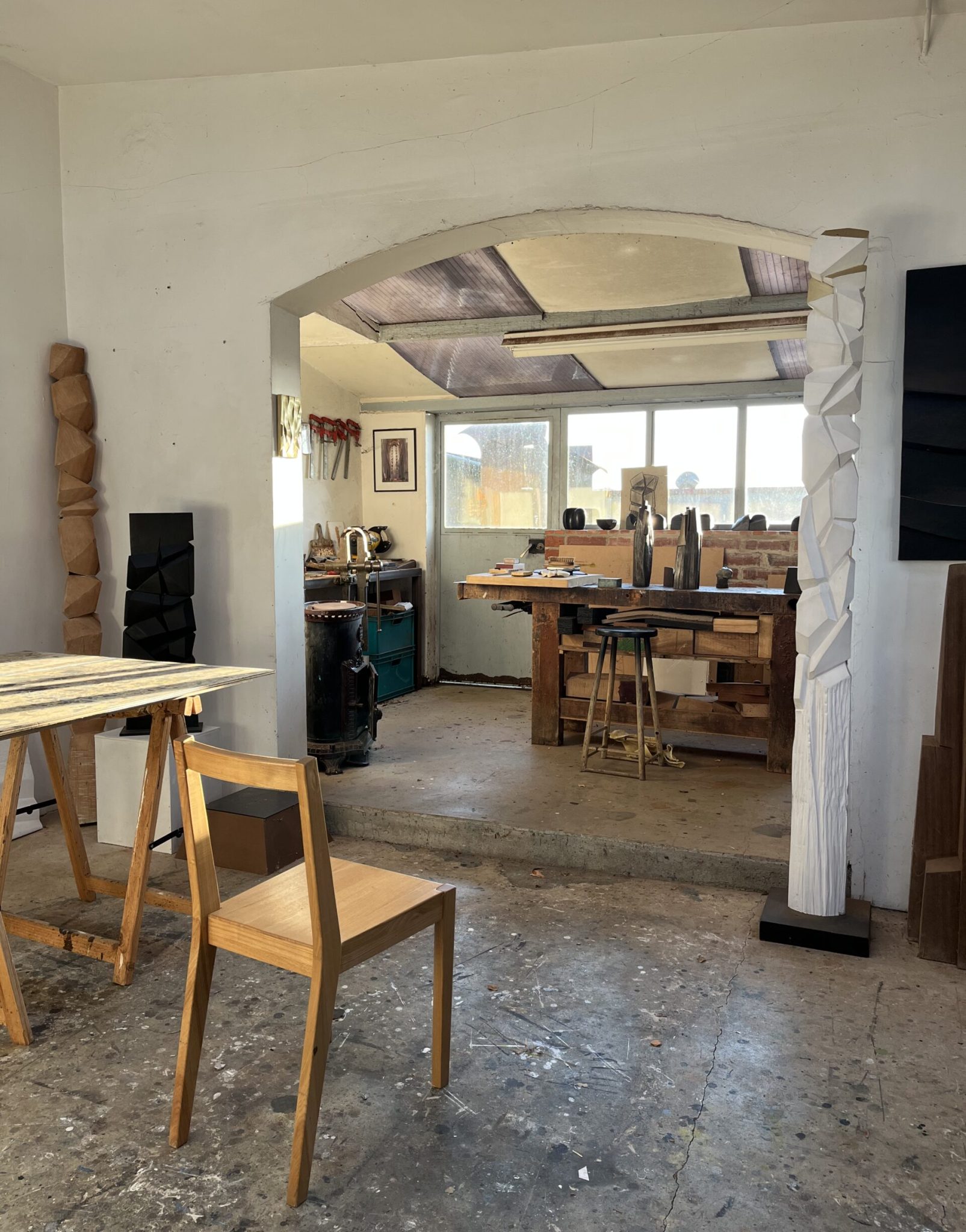
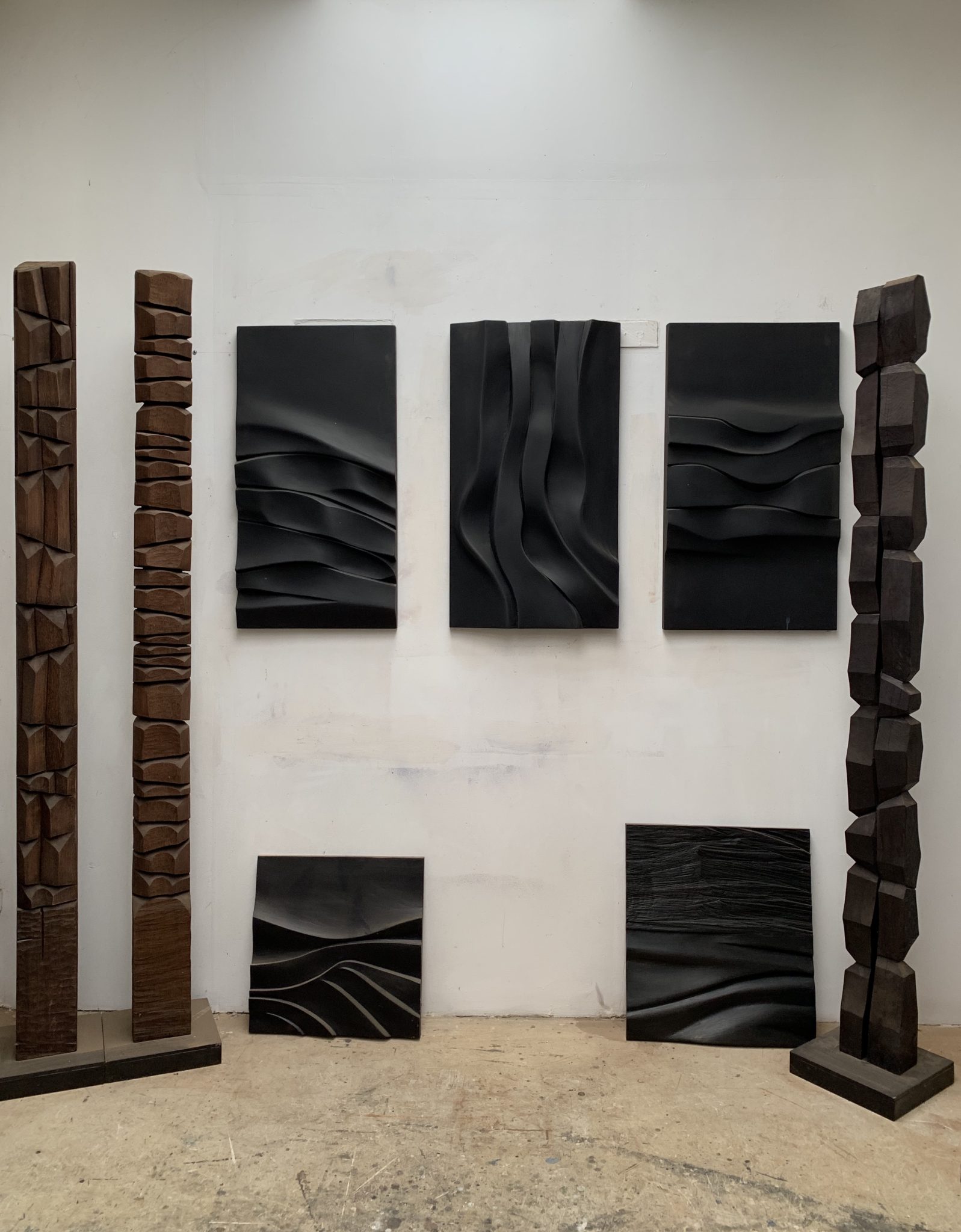
“Everything in my work is construction and draws at once from the vegetal, the mineral, the fluid, from nature and its rhythms”.
— Bertrand Créac’h.
His sculptures and bas-reliefs are reminiscences of long stays on the island of Ouessant, where the artist sketched the island’s “fantastic” rocks, standing like sentinels facing the ocean. The refuges and mountains evoke places of retreat and monastic reflection, grounded in the world through striking plays of mass and light. His work has been presented in numerous solo and group exhibitions across Europe, and several of his pieces are displayed in museums and adorn public spaces in France.
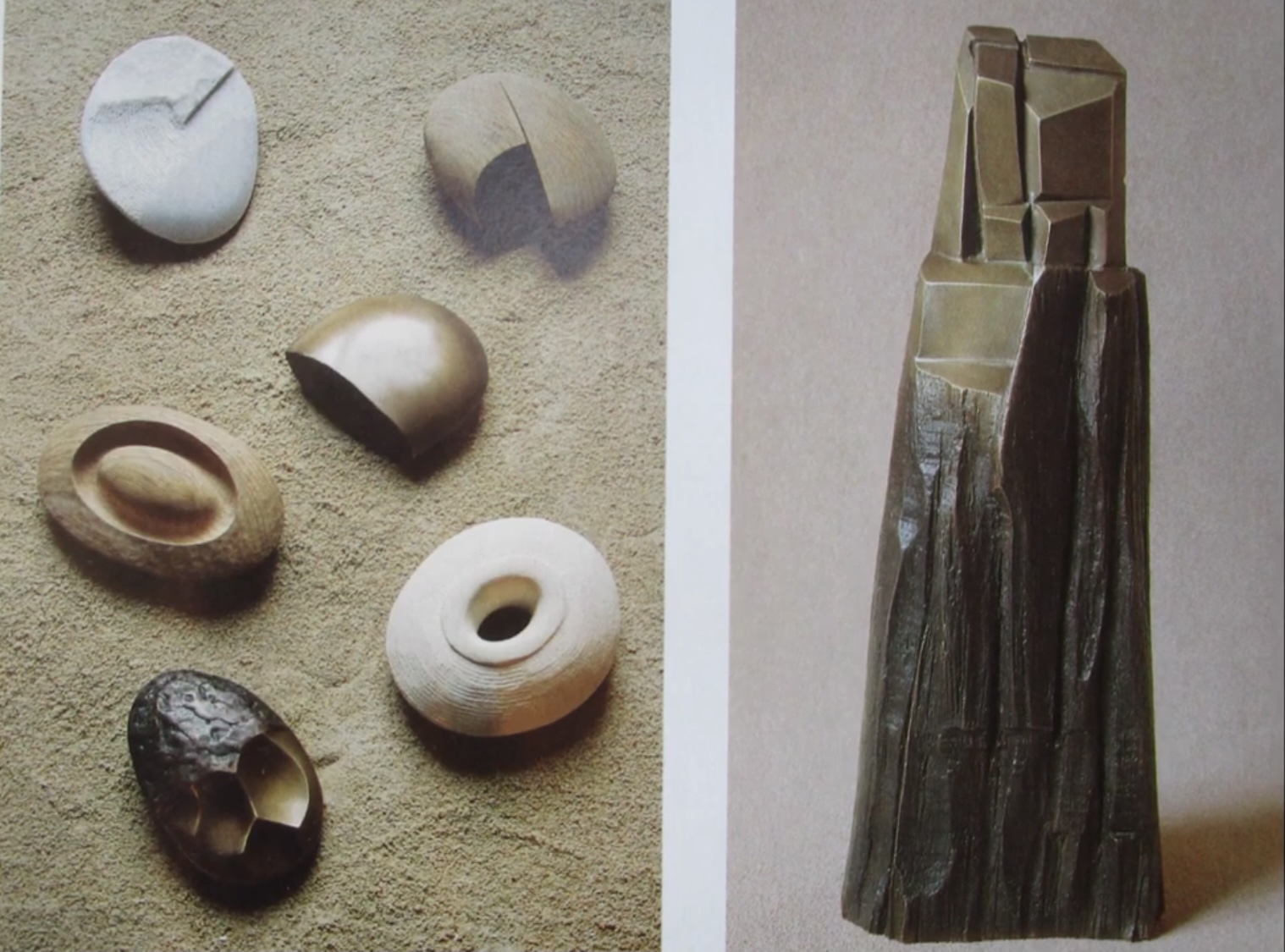
In 1995, he created a tactile installation for the Children’s Workshop of the National Museum of Modern Art, Centre Georges Pompidou, in relation to the Brancusi exhibition. The museum invited him again to contribute to the development of an educational suitcase on “touch” and to record a cassette titled “Sounds.”
His work has been shown in several museums in the Oise region: the Cloister of the former Hôtel-Dieu and the Noyonnais Museum in Noyon, and Saint Pierre des Minimes in Compiègne. He is represented in the collections of the Beauvais Museum with the sculpture Braga (a tribute to the Tibetan people) and a set of tactile sculptures created in 2000, titled Please Touch.
He also created a fountain sculpture for the town of Méru, baptismal fonts for the Abbey Church of Saint-Leu-d’Esserent, marble sculptures for the park of the Oise Departmental Council in Beauvais, and The Four Elements, a series of black marble sculptures for a kindergarten in Aley (Lebanon). He has been published by the Monnaie de Paris, with limited numbered editions of sculptures and jewelry.
In 2010, at the request of the Bishopric for the ordination of the new Bishop, Monsignor Gonin, and the Pentecost celebrations, Créac’h created a monumental ephemeral installation in the choir of the Cathedral of Saint Peter in Beauvais: Les Anges—two painted banners measuring 40 meters high and 2.6 meters wide.
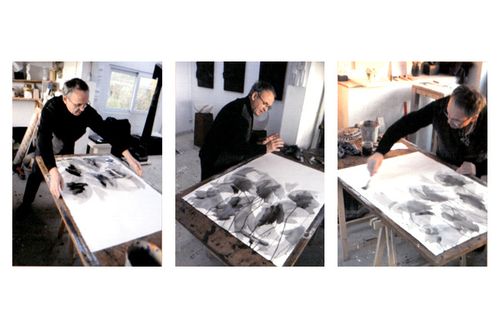
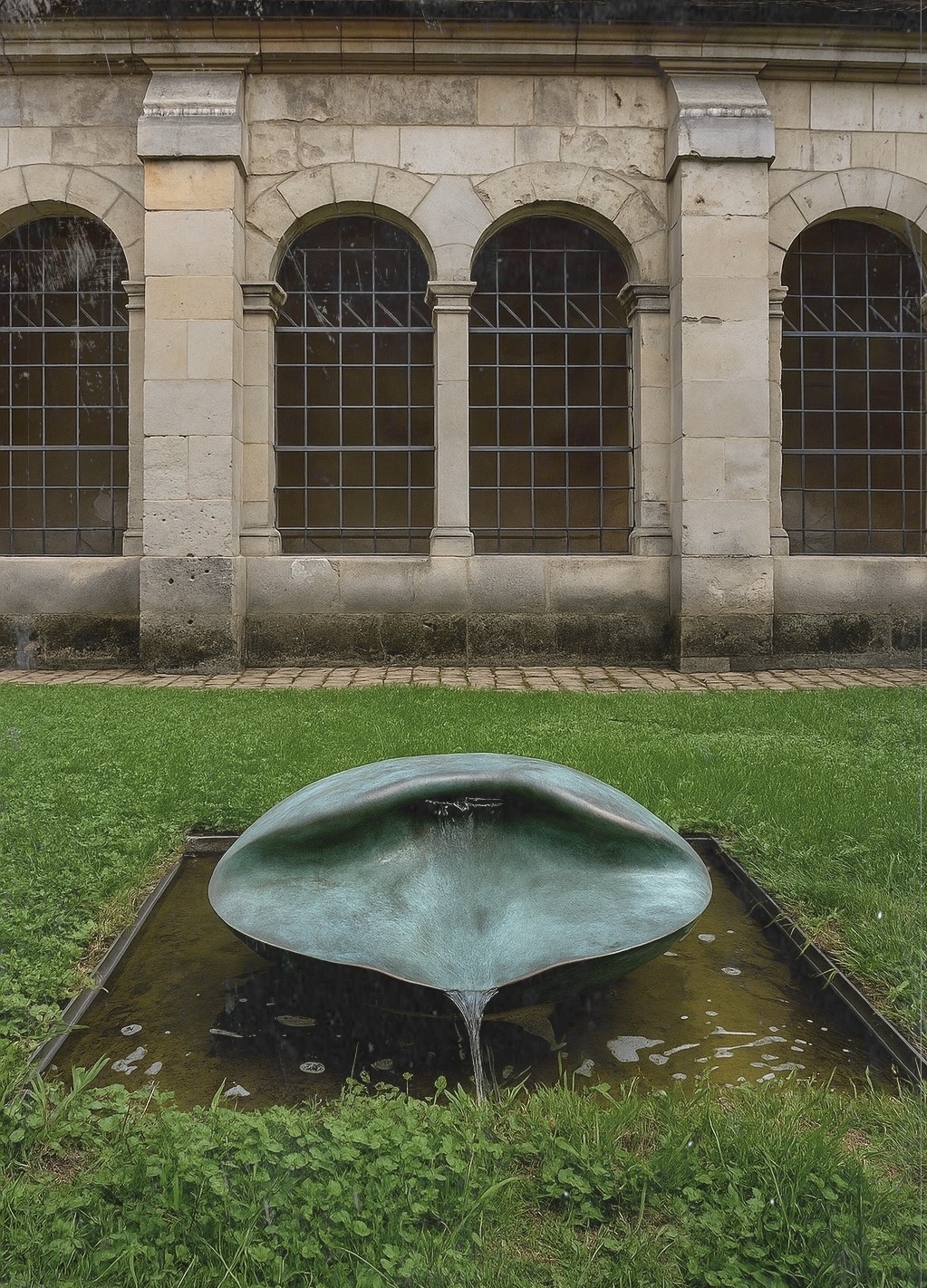
Bronze fountain sculpture in Méru, France.
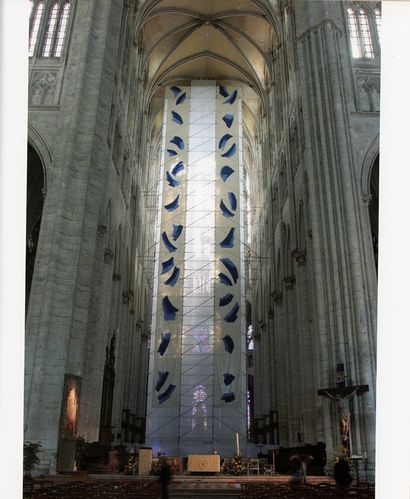
Cathedral of Saint Peter in Beauvais.
The scaffolding was erected all the way up to the top of the cathedral’s vault. We really had to make the best of a bad situation. The Regional Directorate of Cultural Affairs kindly agreed to ‘veil’ this scaffolding for the occasion.
Bertrand Créac’h drew inspiration from the Gospel according to Saint John, but also from the text of Exodus (25:18-22), which, for us, is a prefiguration. Perhaps, for a moment, we have rediscovered the very intuition of the commissioners and architects of the 13th century?”
Créac’h meets Pierre Garnier on the occasion of the creation of a sculpture, “The Bird Tree”, commissioned by the Regional Council of Picardy to celebrate the Pierre Garnier Year. A series of bas-reliefs was also created, illustrating Pierre Garnier’s poetry:
“This floating world, this swimming world, this world of water and soul…”.
— Pierre Garnier, french poet.
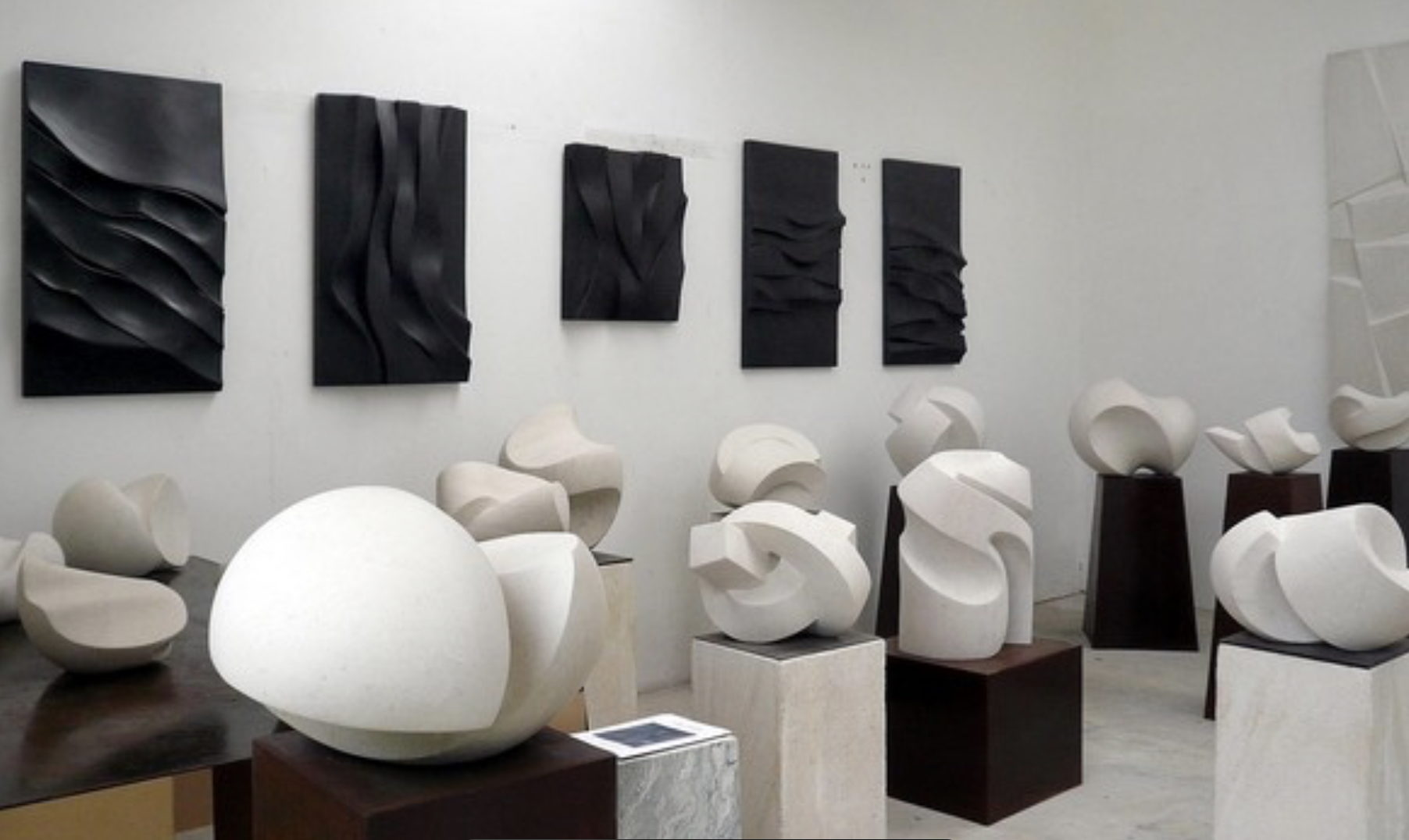
His friend, the poet Alain Marc, placed words like small cairns on his works; this shared creative complicity became the subject of a book published by Bernard Dumerchez, titled “En regard sur Bertrand Créac’h”. The book was presented during the exhibition “Juste des livres”, which showcased the publisher’s collection of artist books at the Departmental Museum of Beauvais.
